Here and Now, Practice Letting Go
“Mindful Seon Meditation Templestay” at Kumkangjeongsa Temple in Gwangmyeong


A place to let go of your weary body and mind, and quietly reflect on yourself. The Seon Meditation Templestay at Kumkangjeongsa Temple can be summarized by the keywords “here and now,” "leisurely,” and “practice of letting go.” It is only 20 minutes away from the city center, so when you look from the temple compound, the city lights are beneath your feet and the stars are ablaze overhead. In the Mindful Seon Meditation Templestay, you sit in the dharma hall, count your breaths and meditate, after which you can walk the trail around Mt. Gureumsan; the hectic pace of everyday life transforms into a breath of tranquility
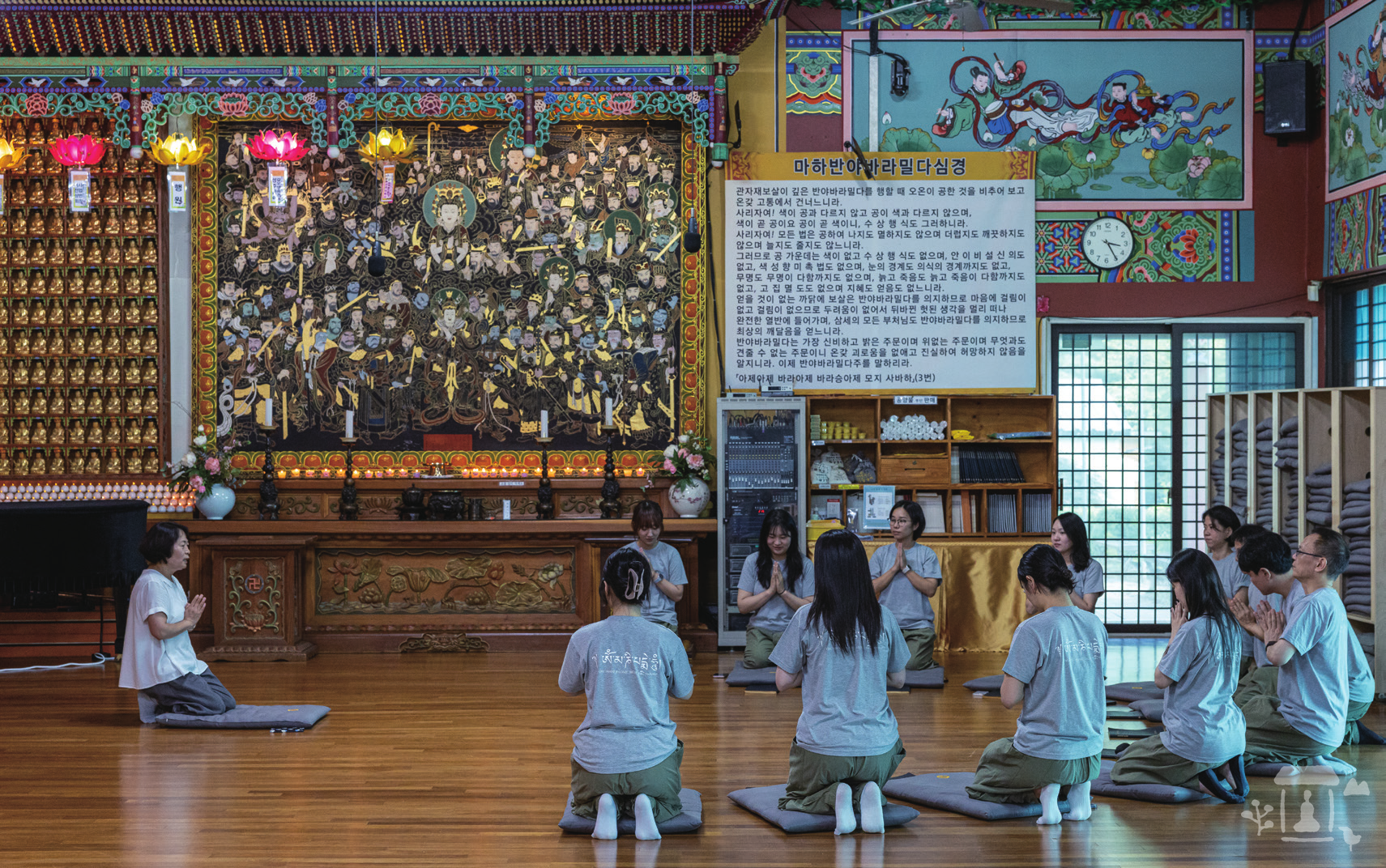

Practice Beginning with Understanding
The day I participated in this Templestay, the literature-based spiritual healing program titled “Geumgang Week: Light Up the Buddha Within” was just beginning. The door plaque hanging at the One Pillar Gate to welcome participants reads, “Kumkangjeongsa on Mt. Guruemsan, a temple of education and welfare.” Opened in 1991, Kumkangjeongsa inherited the teachings of Geumha Gwangdeok Seunim (1927―1999), a pioneer in Buddhist urban propagation work. More than just a place for Buddhist practice, the temple has steadily expanded its cultural outreach, allowing anyone in the community to come and experience spiritual healing.
This same focus is fully reflected in their Seon Meditation Templestay program. The schedule is structured and concise, with explanations clear and systematic. From the initial orientation, to the conversations with a monk over tea, to a Seon meditation experience, and to a walk on Mt. Gureumsan, the program maintains the context of traditional practice while conveying it in everyday language, making it accessible to everyone.
One most striking feature is that it begins with “understanding,” not “instruction.” The teachings here aren’t simply meant to be followed; they naturally open your hearts through friendly tones and detailed explanations. This ambiance is evident from the very first moment of the program, the orientation. The 45-minute explanation covers everything from temple etiquette, joining palms, prostrations, the structure of the Buddhist ceremony, and the history of Templestay, creating an immersive experience that makes the time fly by. With guidance on “what actions to take, why, and in what way?” participants were free to ask questions. Even movements that initially felt awkward became much smoother once they understood them.
During the Templestay, the chains on my heart naturally fell away. During the conversations with a monk over tea, each participant shared their stories candidly. Some came alone, some came with friends, a father came with his daughter, and there was even one expectant mother receiving prenatal care. The monk listened attentively to each person, and then explained the Buddha’s teachings in a way that made them feel comfortable, likening them to the sensory experiences of life. The moment when abstract doctrines were transformed into everyday language, the courage to believe that “I can do it too” blossomed naturally. Buddhist practice is not a special ritual, but a way of life. The message conveyed was that the terms “precepts and tenets” referred to “a unique way of life that I can establish on my own.”

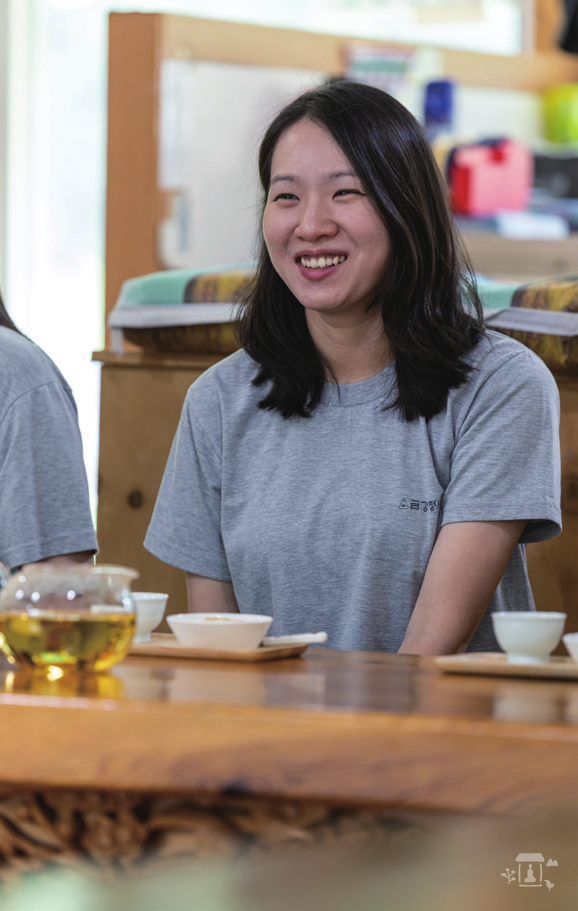
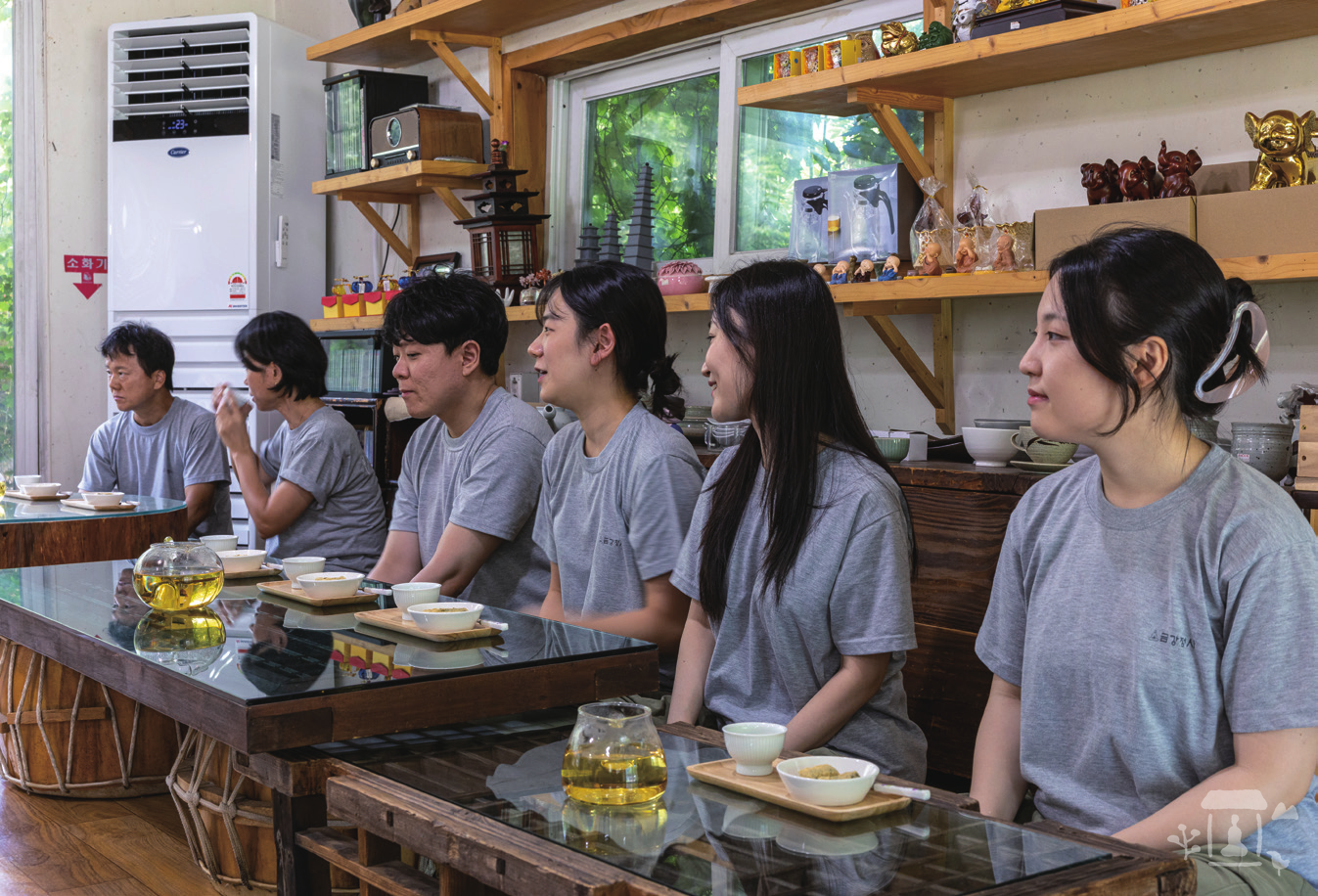
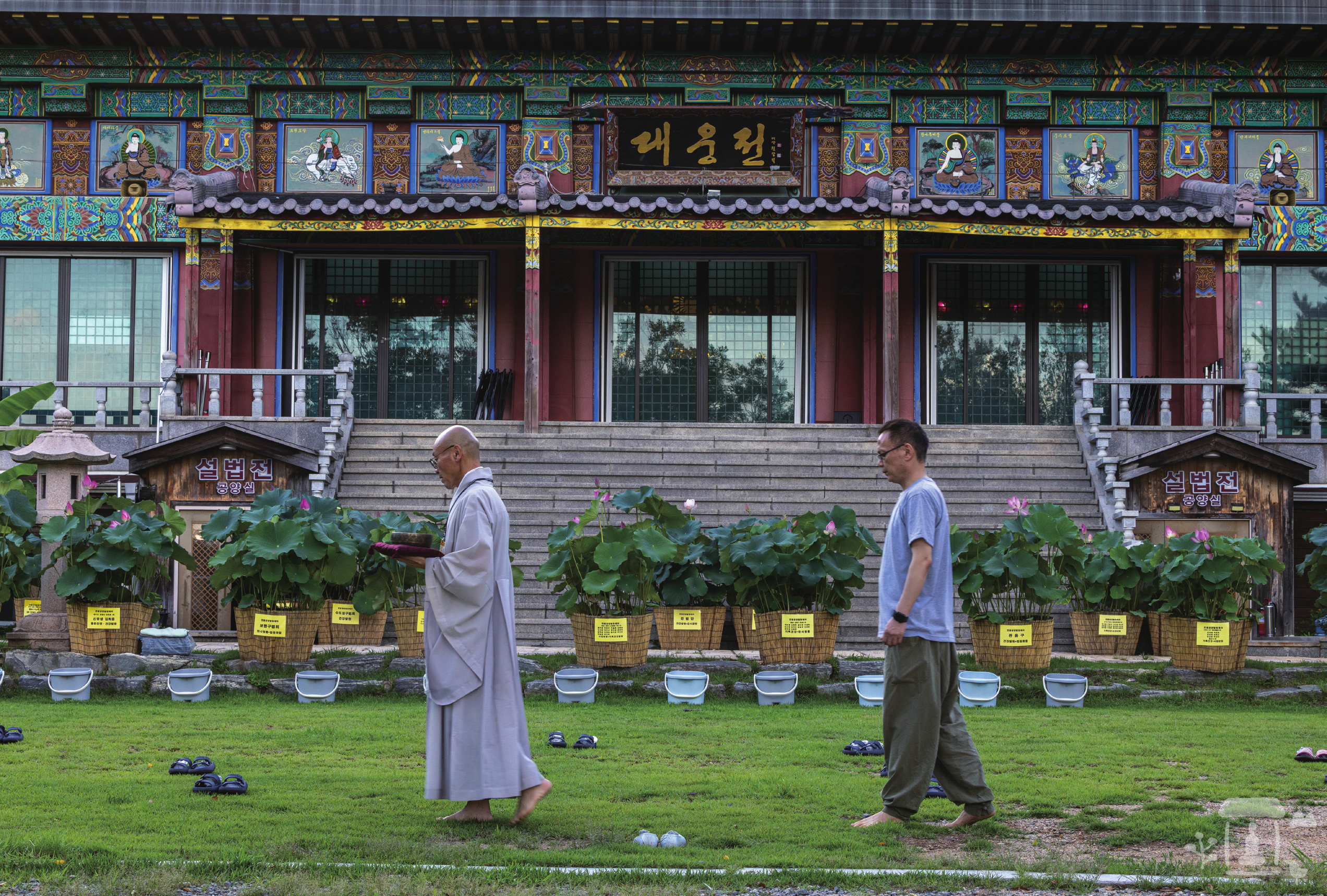
Walking Barefoot and Counting Breaths
The Mindful Seon Meditation Templestay is a truly comprehensive gift, offering a rich and rewarding experience. Over the course of two days and one night, it offers a harmonious blend of diverse activities, including walking meditation, sitting meditation and mindfulness, 108 prostrations practice, and a walk along the Mt. Gureumsan trail. Above all, with the meticulous guidance of Dongha Seunim, a certified Buddhist meditation instructor, even beginners can participate without difficulty.
“Feel the contact between your bare feet and the ground. Walk, feeling the sensation of your toes. It’s about confirming who you are here and now,” he instructed. The first meditation session was walking meditation held on the lawn in front of Daeungjeon Hall. As we removed our socks and walked barefoot on the lawn, our monk instructor regularly struck a small bell to guide our steps. The rules were simple: first, focus on the sensation of your toes and be aware of yourself in this moment. Second, if your mind wanders, return to the sound of the bell. By adding mindfulness to each step, walking becomes meditation.
Participant Kwon Ji-hui (36, Gwangmyeong), who initially hesitated to walk barefoot, shared, “I hate bugs, so I couldn’t imagine walking barefoot on grass, but once I tried it, it was completely natural. At home, my thoughts would often race, but the experience of distracting thoughts being dispelled was unexpected.”
“Inhale through your nose and exhale through your mouth. Deep breathing is the easiest way to activate the parasympathetic nervous system,” said Dongha Seunim. During the next sitting meditation session in the dharma hall, Dongha Seunim introduced the traditional meditation technique of counting inhalations and exhalations. He explained further by adding another meditation technique, Mindfulness-Based Stress Reduction (MBSR), a practice which has been validated by modern psychologists. The goal was to demonstrate that Buddhist meditation is not simply a religious ritual, but rather a scientifically proven technique for psychological stability and stress management.
Kang Ji-won (28, Seoul) works as a nurse at a busy university hospital but participated in the program to find a way to relax in daily life. She said, “Meditation helped me organize my thoughts. I feel like I’ve gained another way to control my mind. What really struck me was the saying, ‘The power to control myself comes from the routines I establish’.”
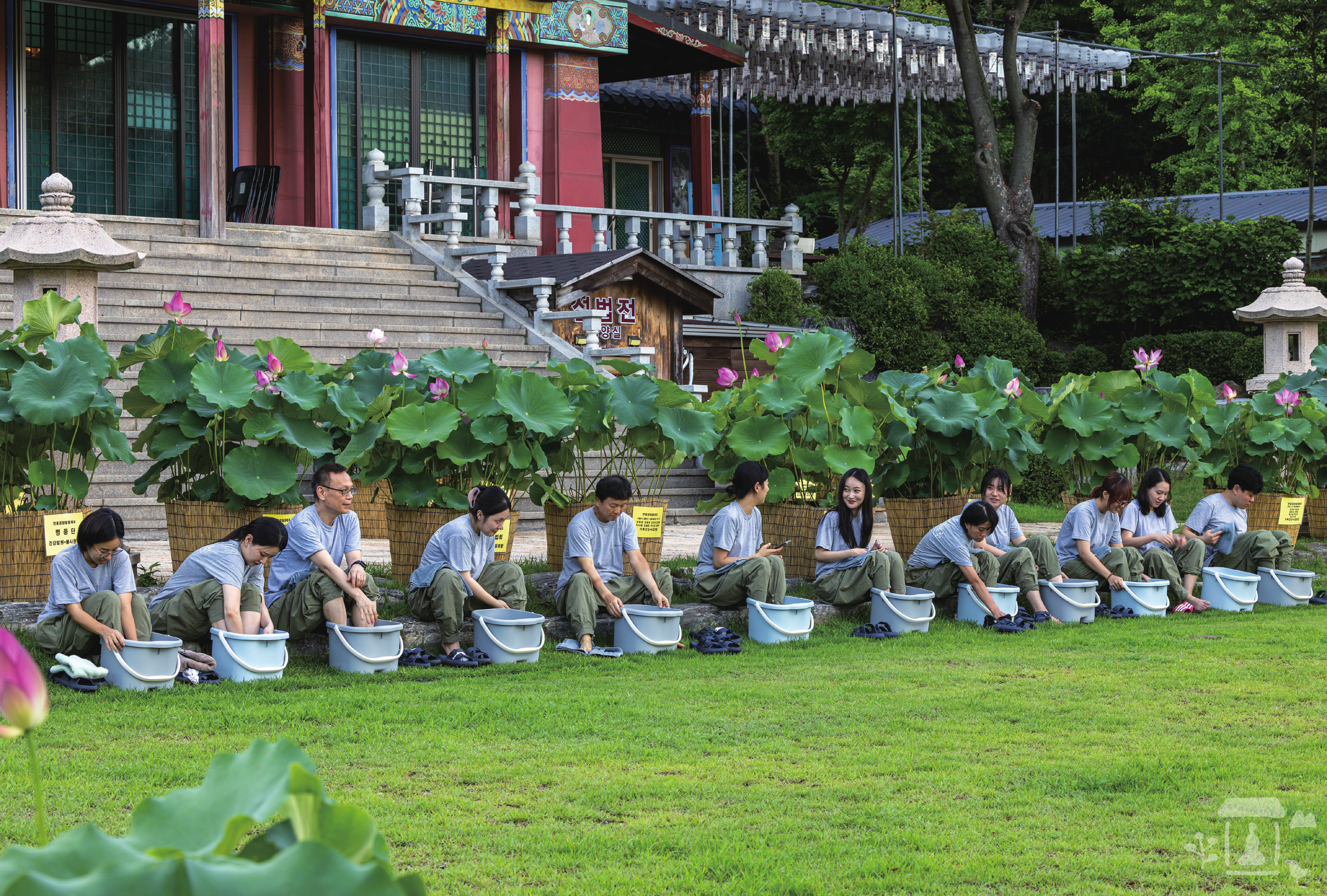
Exercise to Face Pain
The next morning, after the dawn ceremony, during the 108-prostrations practice and prayer bead making, Dongha Seunim emphasized the importance of observing, not avoiding, the pain of doing 108 prostrations. He said: “When you do the 108 prostrations, no one can do it for you. Pain is inevitable. But observe how that pain originates, how it spreads through your body, and how you feel it. In that moment, you will realize that there is a separate ‘me’ observing the pain.”
When your knees and thighs start to stiffen and you begin to sweat, straining your body can actually exacerbate the pain. However, if you keep your toes and knees together and maintain proper posture, it becomes much easier. The 108-prostrations practice requires one to face and overcome physical and mental discomfort.
After completing the 108 prostrations together, Oh Mi-gyeong and Park Chan-oh (47 and 54, Seoul), a couple, hung their completed prayer beads around their necks and, with relaxed smiles, partook of the breakfast offering before embarking on a walk up Mt. Gureumsan. “Take your time, put aside your thoughts about work for a moment, and admire the landscape. Savor this moment,” said Dongha Seunim. The walk up Mt. Gureumsan followed the same principle. As we walked the perimeter trail under the monk’s guidance, focusing on the wind, trees, and the scent of the grass, we felt a resurgence of sensations we had forgotten in our busy lives. It was a moment of finally recognizing the teachings that nature had long imparted. Dongha Seunim emphasized that the essence of meditation is “awareness,” saying: “Ignorance leads to bad habits, and bad habits accumulate, creating bad outcomes. But with awareness, you can stop them and move forward in the direction you want.”.
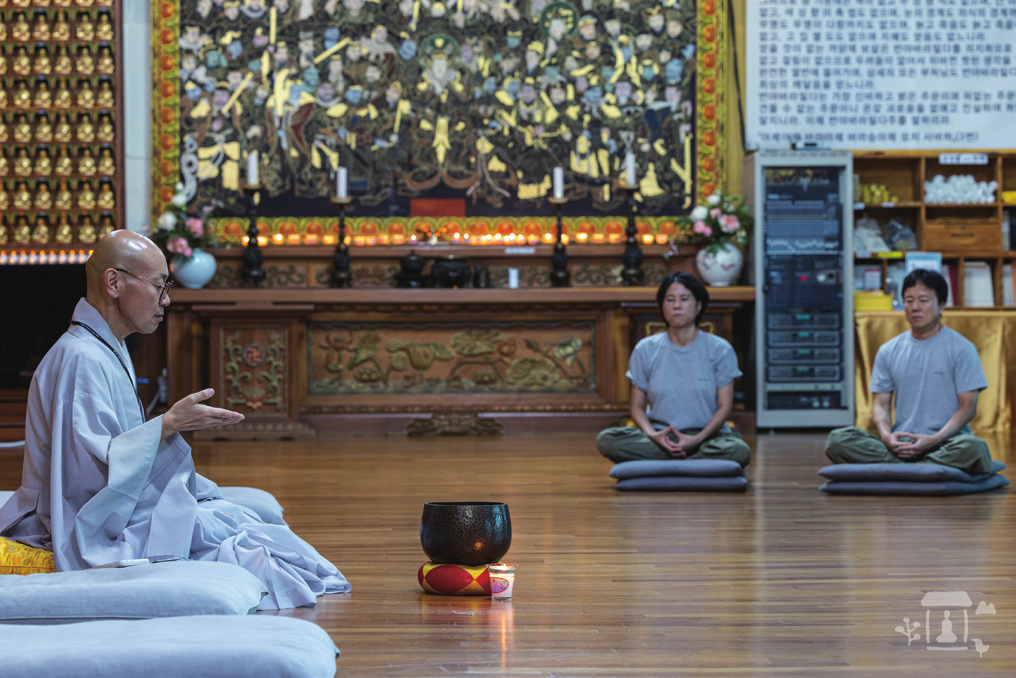
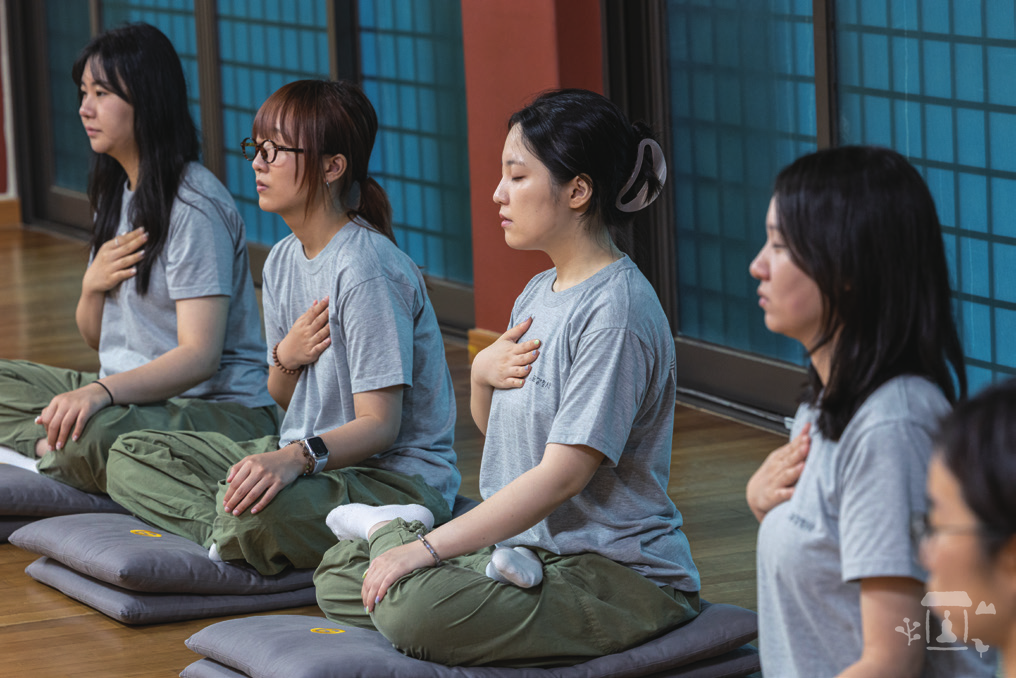
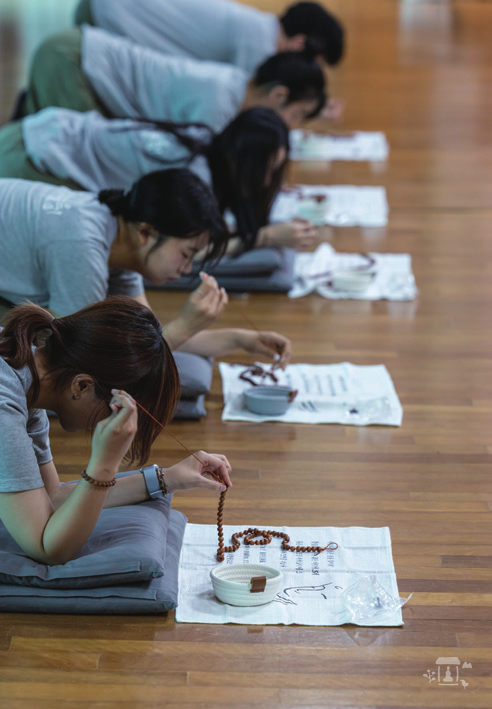
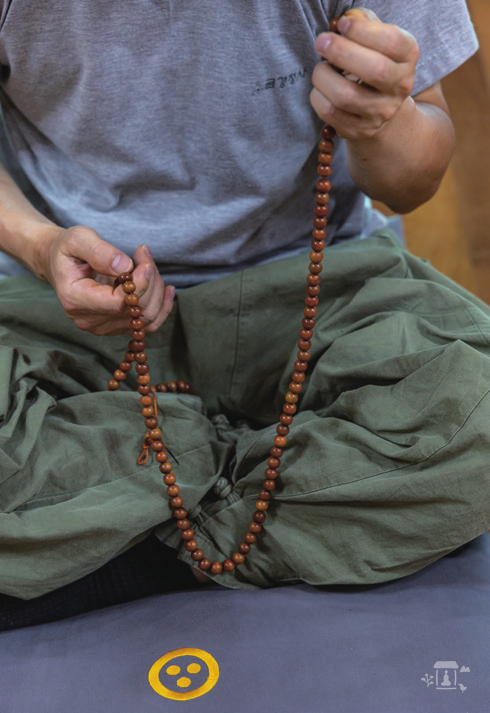
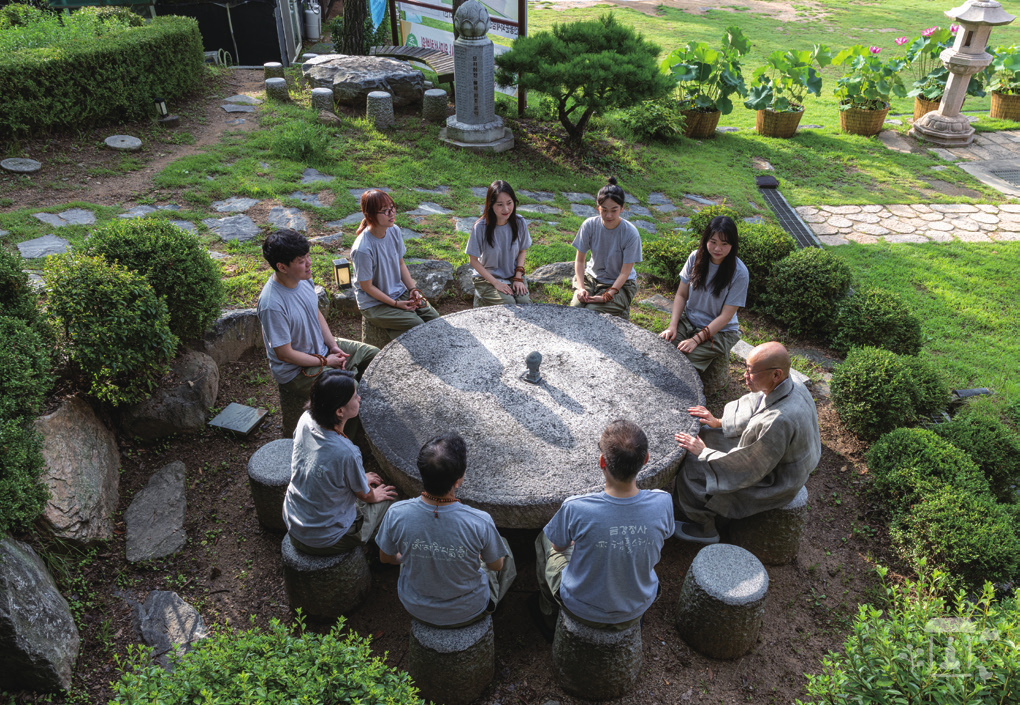
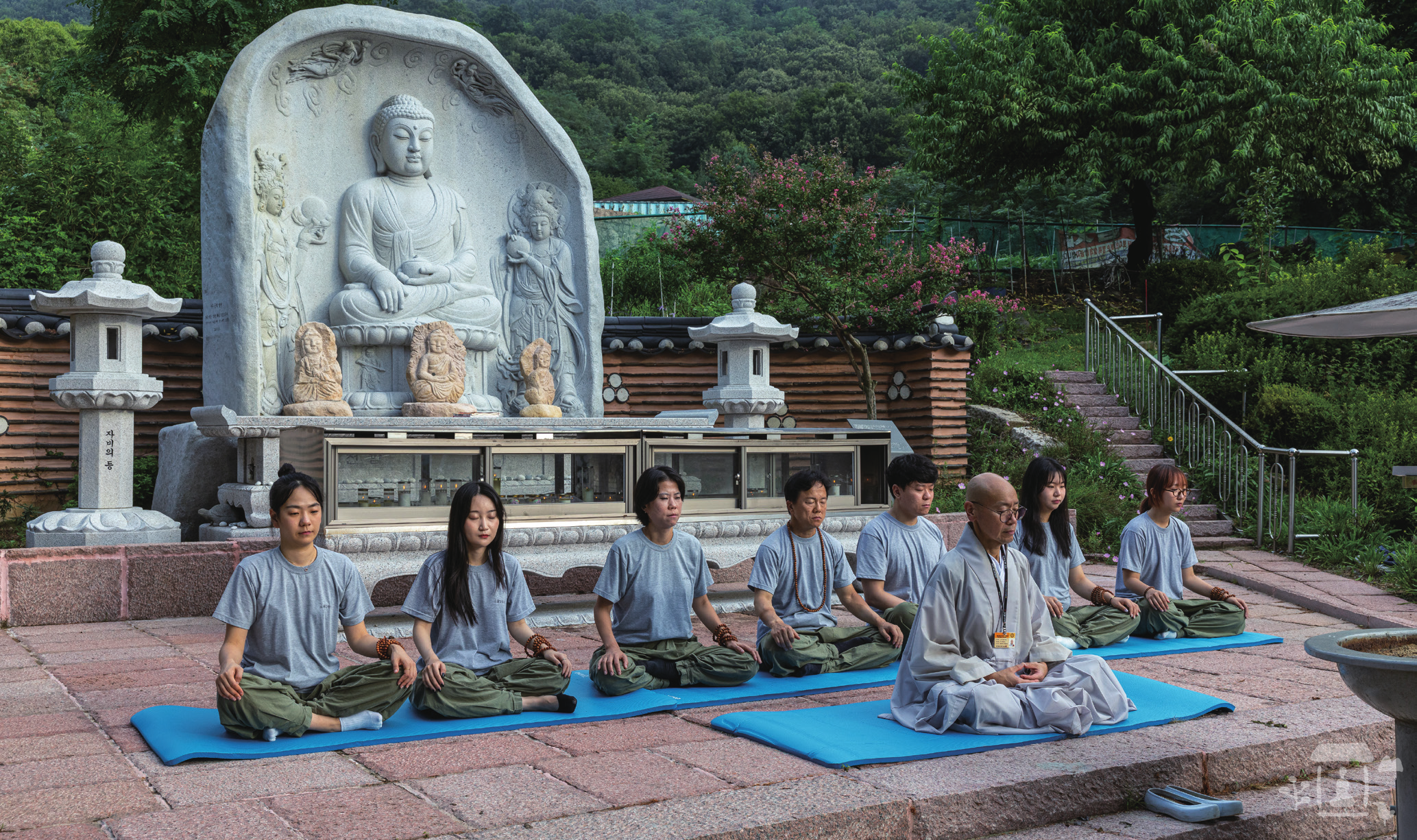
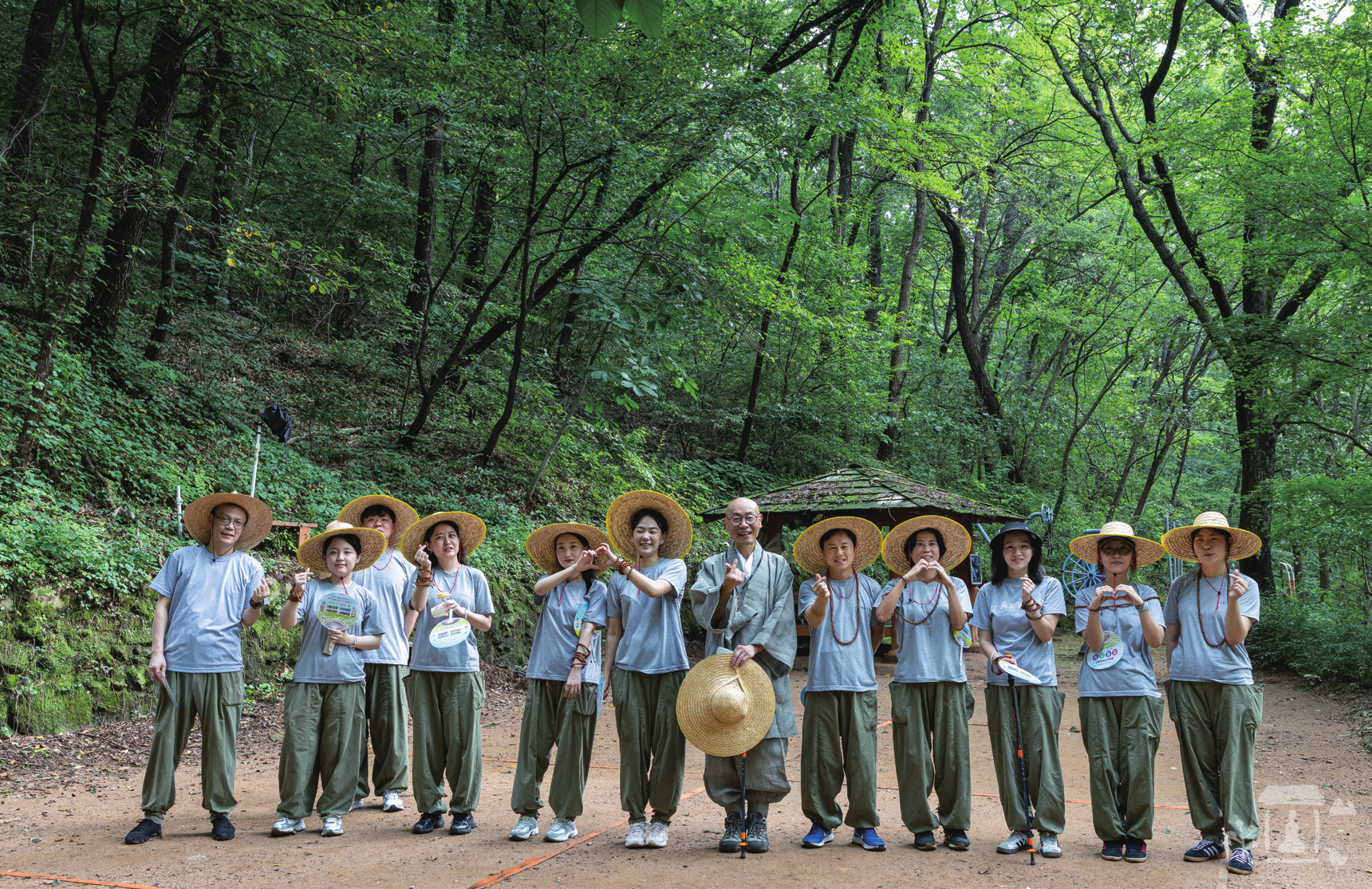
The Mind Returns to Everyday Life
The reason Kumkangjeongsa Temple organized the Mindful Seon Meditation Templestay is clear. While Ganhwa Seon is a profound practice, it presents a high barrier to practice for beginners. Understanding the Dharma and contemplating a hwadu (koan) poses a challenge for those without experience. To bridge this gap, Kumkangjeongsa Temple prioritizes “rest and healing” and offers a way to soothe the anxiety and fatigue of modern life based on traditional Buddhist practice. Continual practice gives one the strength to stay focused in daily life. The temple’s plaque on the One Pillar Gate proclaims, “A temple of education and welfare.” In keeping with this statement, the temple offers a space where rest and learning coexist, allowing those exhausted in body and mind to reflect on themselves.
Dongha Seunim adds: “Just like a car stops on the red light, rest begins with stopping. Come whenever you feel tired. Just pause for a moment, share a cup of tea, and then return to your daily routine.” After completing the walk up Mt. Gureumsan, the participants’ faces lit up with relaxed smiles as they listened to Dongha Seunim’s farewell. The two-day, onenight Mindful Seon Meditation Templestay was not a glamorous experience, but it left participants with the wisdom of awareness that can be applied in everyday life.





